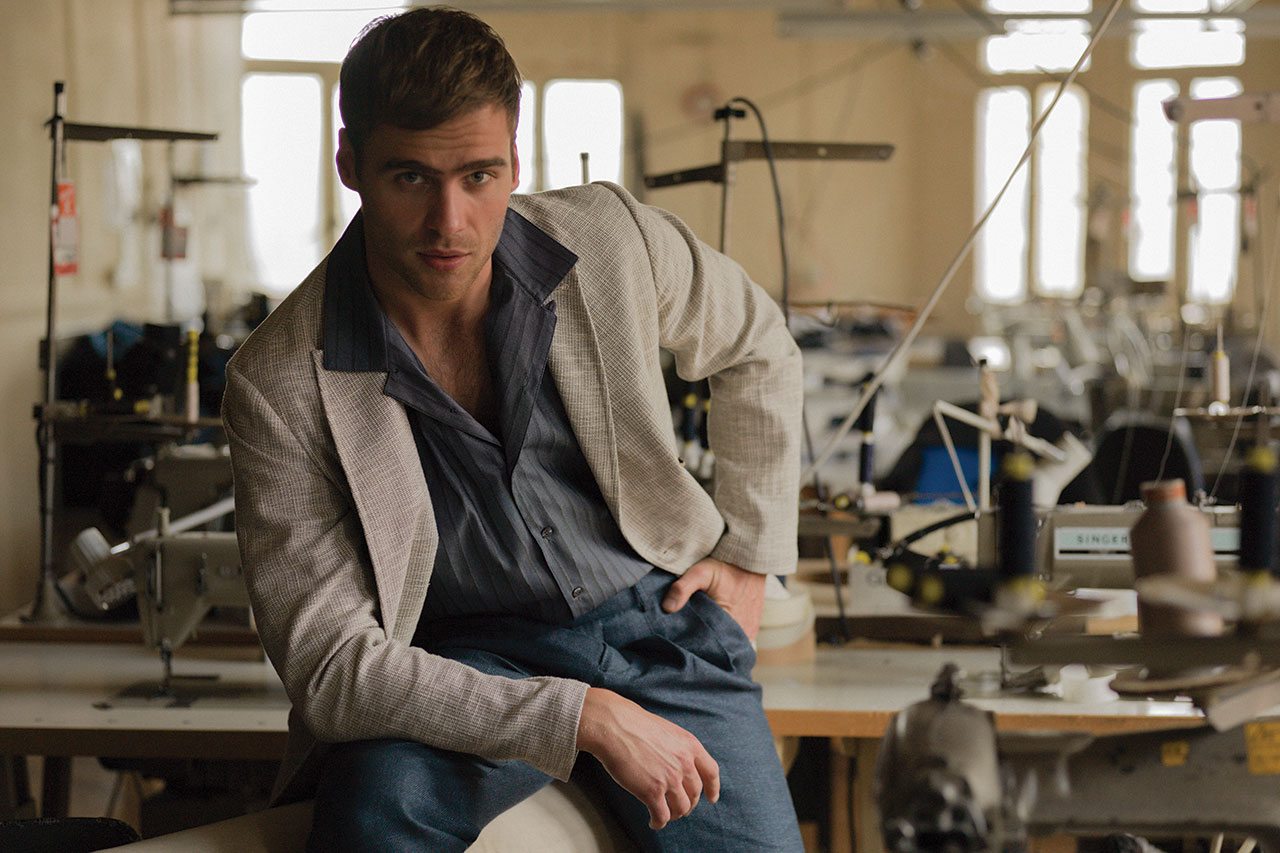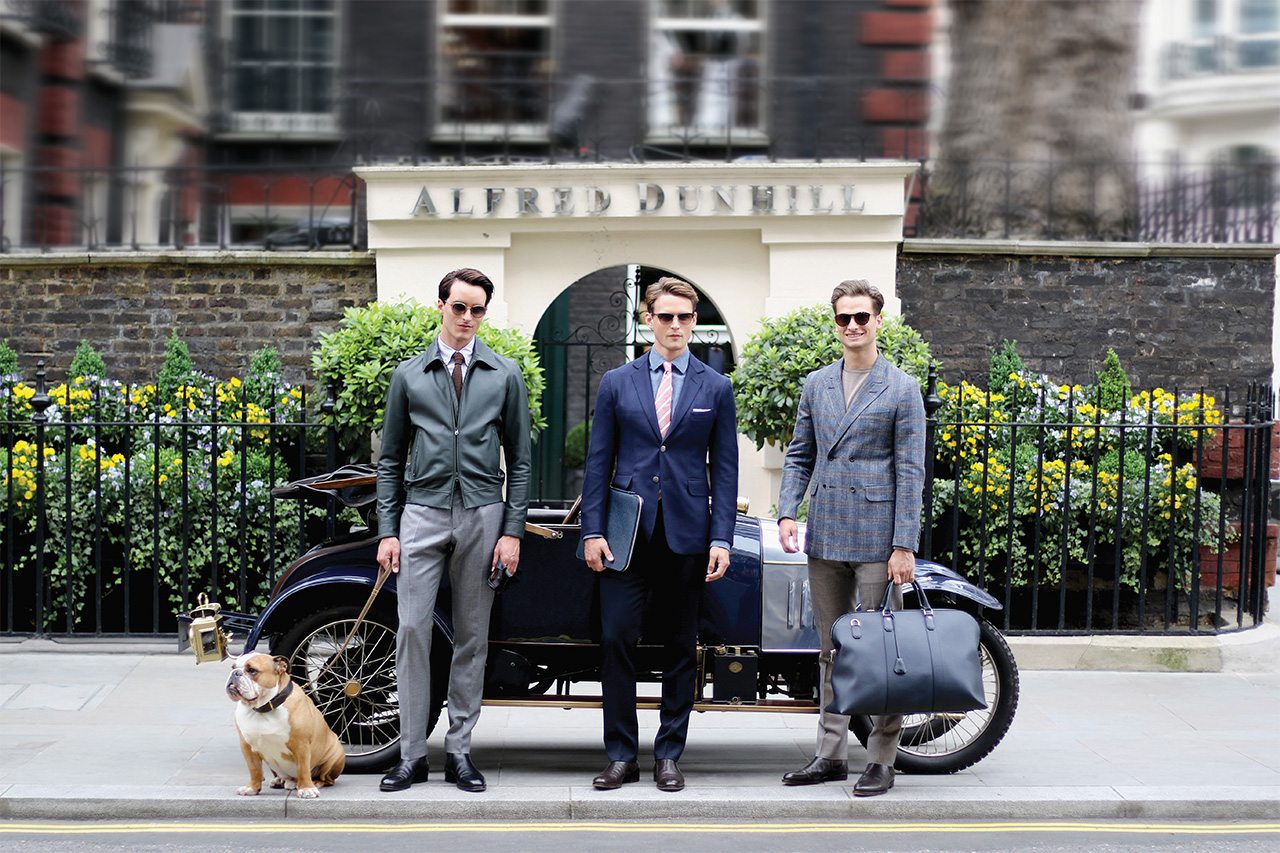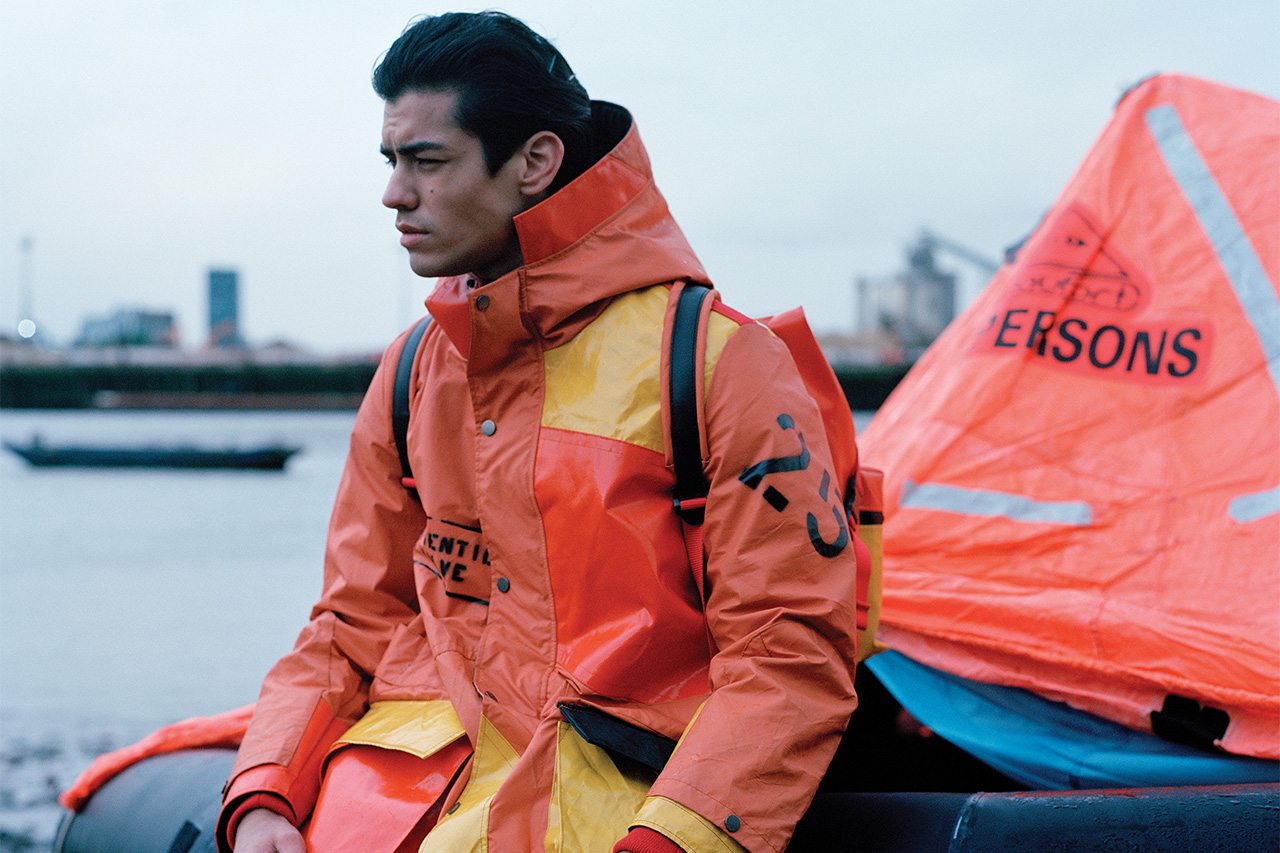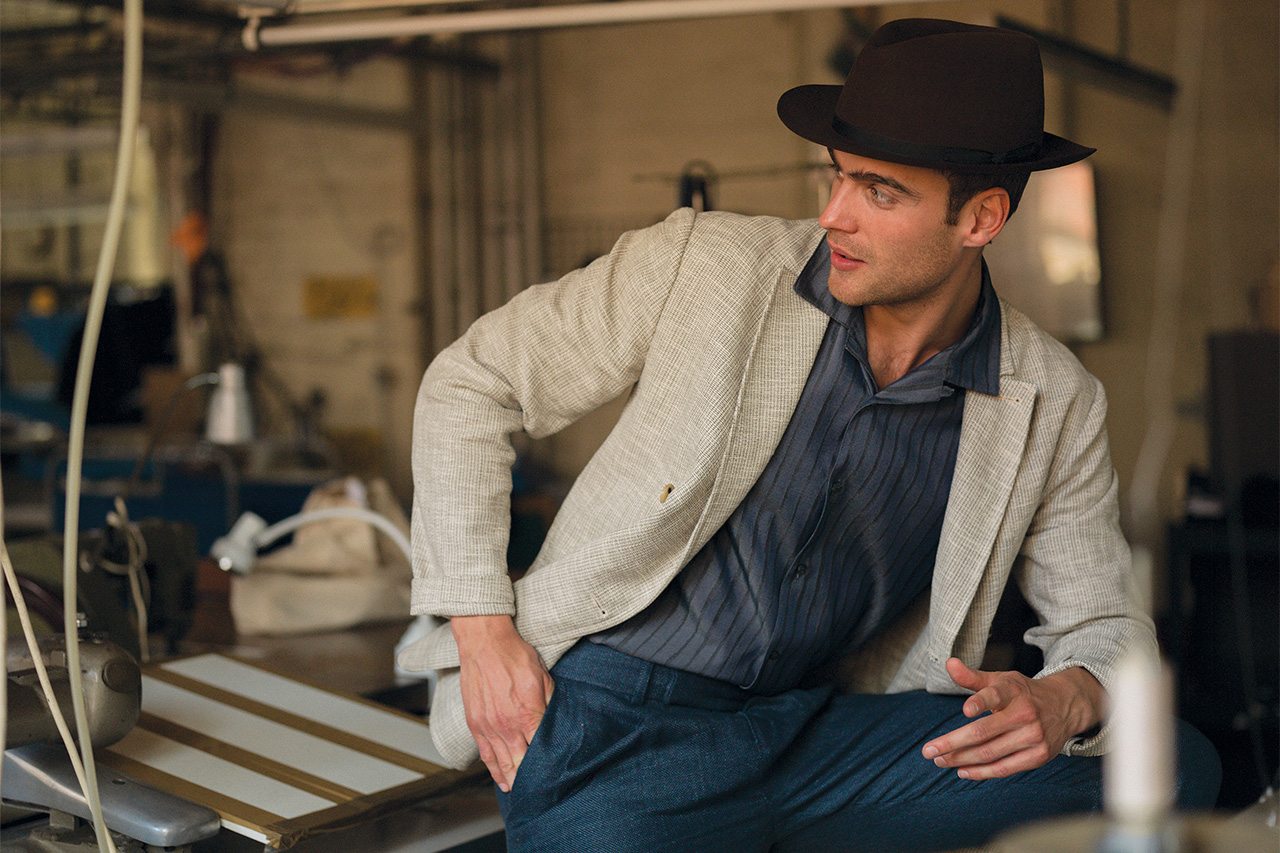How British menswear is changing for the better
While traditions are important, Dylan Jones argues that the rebellion of British designers is changing menswear for 2017
This post may contain affiliate links. Learn more
Tradition and rebellion are the key to British designers’ success when it comes to menswear, says Dylan Jones.

Nowadays, anyone can visit a Savile Row tailor and get a suit made. Twenty-five years ago though, you only had a suit made if you were the sort of person who patronised the Row and, back then, you had to be a very particular kind of person. You were probably a banker, a politician or a barrister. Or, maybe, a rock star. You were certainly not ‘anyone’.
All that has changed, as not only has the industry moved forward, but the customer has changed too. Britain today is more classless, more racially mixed and far more attuned to the way in which fashion has become not just a global lifestyle, but also an indicator of sensibility.
This is especially true in the world of menswear, but then, as far as that’s concerned, we have form. And if anyone ever asks you just why Britain is so good at menswear, and unsurpassed at producing designers, then you only need to say this: not only are the British good at tradition, we excel at rebellion too. Britain, and especially London, is awash with great sartorial heritage, both recent and historical. Not only do we have the greatest tailors in the world on Savile Row – we did, lest we forget, invent the double-breasted suit – we are also responsible for every major youth cult since the end of the Second World War: each one – from Edwardians, Teds, Mods and Hippies to Skinheads, Punks and New Romantics – was born on the streets of London.
At its best, fashion has always been about play-acting, a way of artificially presenting yourself to the world, an elaborate form of disguise or fancy dress. Fashion still has the ability to shock us in ways to which we think we’ve become immune and, over the years, it has encouraged us to look like gypsies, tramps and thieves, as well as hoodlums, members of the Baader-Meinhof gang or undernourished Nepalese peasants.
Where the past meets present
‘London is the creative heart of the Burberry brand and has such a unique energy,’ says Burberry’s Christopher Bailey. ‘Steeped in the incredibly rich tradition of British menswear but with outstanding, innovative young talent coming out of its design schools. I’m so inspired by that mix of heritage and modernity, along with a few iconic Brits who I admire, are references for the show. I think British style is much more about a mindset than a “formula”. For me, its charm lies in its effortlessness – a sort of thrown-together elegance, coupled with a quiet confidence.’
But, as well as this great heritage and diversity, these days, we also have some of the world’s most high profile fashion designers in Paul Smith, Christopher Bailey and the Alexander McQueen brand. We have Alfred Dunhill, Church’s, DAKS, Edward Green, Gieves & Hawkes, Hackett, Henry Poole, Richard James, Mulberry, Oliver Sweeney, Thomas Pink and more. And while some of these brands might be owned by foreign conglomerates, it is British craftsmanship that keeps them at the very forefront of the industry. Just look at Oliver Spencer, for instance, a man who completely understands the modern male consumer, and who makes pieces that years ago would perhaps have been called ‘clothes for architects’. Margaret Howell is one of those classic British brands that has always catered for this niche – and I say that with the greatest affection – that the whole idea of casual formal dress is something she identified years ago, and is something Oliver has picked up on too. There is a whole new generation of British designers who have used the catwalk to show that there is a middle way between wild and wacky and strict tailoring.
Margaret Howell is one of those classic British brands that has always catered for this niche – and I say that with the greatest affection – that the whole idea of casual formal dress is something she identified years ago, and is something Oliver has picked up on too. There is a whole new generation of British designers who have used the catwalk to show that there is a middle way between wild and wacky and strict tailoring.

Above: Brands like Dunhill are mixing heritage and modernity to make menswear their own
Designing with a difference
In the five years we have been running London Collections Men (Britain’s men’s fashion week), we – by which I mean the British Fashion Council and myself – have been bowled over by the varied and idiosyncratic nature of the collections shown by the British menswear designers. From the likes of the luxury streetwear of Craig Green, Katie Eary and Sibling, to the modern tailoring of E Tautz, Kent & Curwen and Alfred Dunhill, to the iconic international brands like Alexander McQueen, Paul Smith and Burberry. This extraordinary activity proves that not only is menswear rather more exciting than womenswear at present, but it also proves that the real innovation is happening in London.
Take Christopher Raeburn for instance, a young designer who has made a virtue out of clever collaborations with the likes of Victorinox and MCM. Producing ethical fashion is at the heart of Christopher’s brand, and when he was showcased in American Vogue in 2010, it was under the banner ‘Remember the four Rs – reduce, reuse, recycle and Raeburn’. One of his earliest signature collections, ‘Remade in England’, featured a series of bombers and parkas created from repurposed parachute silk. He describes the typical Raeburn item as being a mix of archaeology and new technology. One of his recent collections made full use of this remade ethos with a bomber jacket and a parka made from an orange recycled inflatable life raft. ‘Soon you will be able to buy a jacket and when you no longer want it, you can send it back and it will be mulched down into something else,’ he says.

Above: Christopher Raeburn’s ethos lies in ethical fashion
Or what about Private White V.C.? A true military hero and founding father of the Manchester factory which now manufactures clothing in his name, Jack White was born in Leeds in 1896. He was awarded the Victoria Cross during World War I, and on returning home, embarked upon an apprenticeship as a trainee pattern cutter at the local factory, rising through the ranks to become general manager and then owner. The new clothing line has a subtle nod to Jack’s military legacy, with many items based on classic wartime pieces, updated with added functionality and detail for the modern man. Materials are sourced locally, while the collection is designed by Nick Ashley, the brand’s Creative Director. ‘Private White V.C. is a high integrity brand,’ he says. ‘Starting with wool on a sheep, weaving it locally, carefully constructing the clothes in Manchester and selling them with love to people who care about such things. These clothes are for people who have an emotional attachment to
the clothes that accompany them through life.’

Above: Private White V.C. is about ‘high integrity’ says its creative director, Nick Ashley
All the right reasons
Look at many of the new British brands that are making a name for themselves on the international stage, and you’ll see that heritage and craftsmanship have become all important. It is no longer good enough just to be a good designer, you also now need a reason. Why are you a designer? Where do you source your fabrics and materials? Where do you manufacture? And what is your sensibility?
The new consumer needs to believe in a brand more than ever before, and the modern British menswear brands are being successful because they tend to be genuine, coming – as many of them do – from a street-style heritage, a generation brought up on style magazines, where politics has always played as big a part as style. And long may it continue.
MORE MENSWEAR: GQ’s Dylan Jones on modern British style / The LCM Guide: Designers to Watch / Autumn style edit by Mr Porter’s Style Director Olie Arnold
